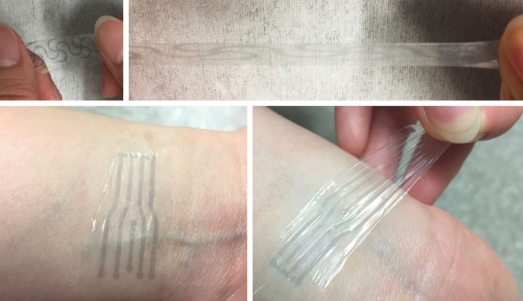Electronics are often stiff and the brain is soft, so having the two work together has often proved to be challenging. One such example is when neuroscientists implant electrodes to measure brain activity and deliver small jolts of electricity for pain relief.

Image source: Stanford University.
One chemical engineering professor, Zhenan Bao, and her team at Stanford University are making it their goal to eliminate such difficulties. For over a decade, Bao's lab has been working to make electronics flexible and soft so that they can operate like a second skin. The team has also created brittle plastics that can conduct electricity more elastic.
In the journal Science Advances, Bao's team described how they took brittle plastic and chemically modified it to make it as bendable as a rubber band while enhancing its electrical conductivity. The result was a flexible, soft electrode that's compatible with human nerves.
“This flexible electrode opens up many new, exciting possibilities down the road for brain interfaces and other implantable electronics,” Bao told the journal. “Here, we have a new material with uncompromised electrical performance and high stretchability.”
Of course, the material, in its early stages, is still a prototype. The team plans to develop it as part of their long-term focus on creating flexible materials that interface with the human body.
In the human brain, special thread-like fibers known as axons play a similar role to electrodes in electronics, which carry signals back and forth to allow different components in a device to work together. Bao's stretchy plastic is designed to make a seamless connection between electronics and the organic electrodes that run through our bodies.
“One thing about the human brain that a lot of people don't know is that it changes volume throughout the day,” said postdoctoral research fellow and first author of the paper, Yue Wang. “It swells and de-swells.”
Currently, electronic implants can't stretch and contract with the brain, making it complicated to maintain a strong connection.
So how did the research team create this flexible electrode? They began with a plastic that had high conductivity and biocompatibility, as it would need to be safely brought into contact with the human body. But there was a major issue here: The plastic was brittle, and stretching it just 5% would break it.
Bao and her team looked to preserve conductivity while adding more flexibility. By working with scientists at the SLAC National Accelerator Laboratory, they were able to use a special type of X-ray to study the material at the molecular level. The plastic in this experiment was made of two different polymers that were tightly wound together, one being the electrical conductor. The other polymer was essential to the process of making the plastic. When combined, these polymers created a plastic that was like a string of brittle, sphere-like structures. So it was conductive, but not flexible.
After testing more than 20 different molecular additives to make the material flexible, the team succeeded. Surprisingly, the molecule that did the trick was similar to additives used to thicken soups. The additive transformed the plastic's chunky, brittle molecular structure into a fishnet pattern, which allowed the material to stretch and deform.
When the team tested the new material's elasticity, they found that it became slightly more conductive when stretched to twice its length. The plastic remained conductive even when stretched 800% of its original length.
Now the question is: What does this tell us about soup additives?
Sources: Stanford University, Science Advances
Advertisement
Learn more about Electronic Products Magazine





